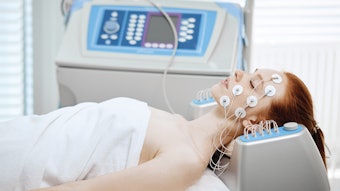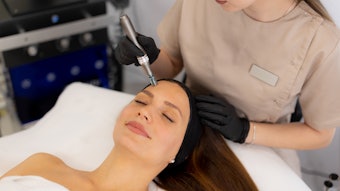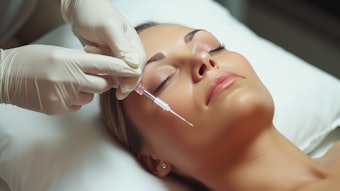
Abstract: Employee compensation can be a delicate subject with everyone, but making sure you are keeping your compensation program competitive for both your employees and your business is essential to a healthy practice. By compensating everyone along similar guidelines, as well as ensuring that your staff understands and strives to achieve these, you will keep your employees and your practice at the top of the game.
The medical aesthetic industry is evolving, and many professionals from the traditional medical industry are jumping into the cosmetic procedure game. These newcomers face a learning curve when it comes to pricing and compensating for medical aesthetic services rendered, and having the right compensation structure in place for a medical aesthetic practice’s staff is critical.
This industry has some of the highest payroll expenses of any type of business, and therefore, when it comes to compensation, there is very little room for mistakes. Many practice owners are paying compensation that is not profitable for their business, nor that holds accountability for their teams in meeting performance goals. It is important to have a pay structure that is fair and equitable for you as a business owner, as well as for your team.
Settling on a structure
Compensation is a combination of what you pay your employees plus the benefits you provide. The right benefits program is important because it helps you distinguish yourself from the competition. It can also be used as a tool in staff retention when you factor in vacation and paid time off, paid education opportunities, retail commissions, health insurance, and special employee pricing on products and services.
The days of paying a straight 50% commission to service providers are by and large done. However, there are many types of pay structures out in the market today, and no matter what type you choose, the numbers have to add up to the right percentage for your practice in order to maintain success.
Medical professionals such as RNs and PAs most likely are accustomed to salaried positions, so if you are moving new people into a commission-based structure, they probably will need to be trained on and transitioned into performing services based upon dollar incentives and commissions. Spa professionals such as estheticians and massage therapists may be more used to commission-based pay, but it is still important for you to take into consideration you are bringing two different types of professionals together. Accountability goals may be new to both of them.
Team member compensation
Though it certainly isn’t the only compensation structure available and like any, there are pros and cons in regard to it, many practices choose to compensate employees with a base and/or a commission salary package. Even within this structure, however, there are differing options and strategies.
A compensation package can vary depending on the position and commission percentage due to services performed. An RN may have a higher hourly wage, such as $20–25, plus tiered commissions of 2–5% on services performed. Meanwhile, an esthetician may earn $10–15 per hour with 35–45% tiered commissions. You pay the base draw or the commission, whichever is greater. Service providers should be eligible to participate in a retail commission program, as well.
The following are four ways to track a service provider’s performance and pay them accordingly.
Pre-booked percentage. The pre-booking number comes from the number of patients in a pay period who have scheduled a next appointment with the service provider. If the service provider saw 40 patients during the pay period and 20 of them booked their next appointment before leaving, the provider’s pre-booking percentage would be 50%, because half of the scheduled patients are pre-booked for a next appointment.
Retention percentage. This refers to the number of patients seen in a pay period who return and request a specific service provider. If the service provider saw 40 patients during a pay period and 20 of them were return requests, the provider’s retention percentage would be 50%, because half of the scheduled patients were repeat business.
Premium service percentage. This percentage is determined by identifying service categories such as medical-grade peels, eyelash tinting and microdermabrasion that have higher ticket prices and require patients to come in frequently in order to maintain the service, making them more likely to be loyal to a service provider and a practice. Suppose a practice had $4,000 in gross service sales for a two-week pay period, and $2,000 of that total came from chemical peels and microdermabrasion. Divide $4,000 in gross service totals by the $2,000 in premium totals, and your premium percentage would be 50%.
Retail percentage. This percentage is derived by dividing the service provider’s retail product sales during the pay period by service sales. For example, if a service provider generates $2,000 in service sales during the pay period and in addition sells $300 worth of retail product to a client, divide $2,000 by $300 and you get a 15% retail percentage to service dollar sales.
Productivity = compensation
The important factor when making compensation changes is coming up with a step-by-step plan that outlines the process of what the change needs to be and how it is going to be implemented. There has to be a focus on what the win is going to be for the practice owner and what it is going to be for the people who work for the practice. Typically, strong marketing pieces, referral programs, a coaching program, business-building tools and creative incentives are not in place before implementing such a compensation system, but these are all definite wins for a team in regard to what new benefits they will be receiving when a change has to be made.
Paying commissions and holding people accountable are well-established methods in other industries and can work very effectively in a medical aesthetic business as well, especially when training is provided. However, while it is true that many times employees perform better with incentives, it is essential to remember that money doesn’t always have to be the primary objective. Sometimes additional paid time off, office recognition or even job promotions are seen as equal to or greater than an increase in pay. Whatever the compensation though, it’s important for a practice’s employees to know that the harder they work, the more they can earn. And that is a win-win situation for all involved.










